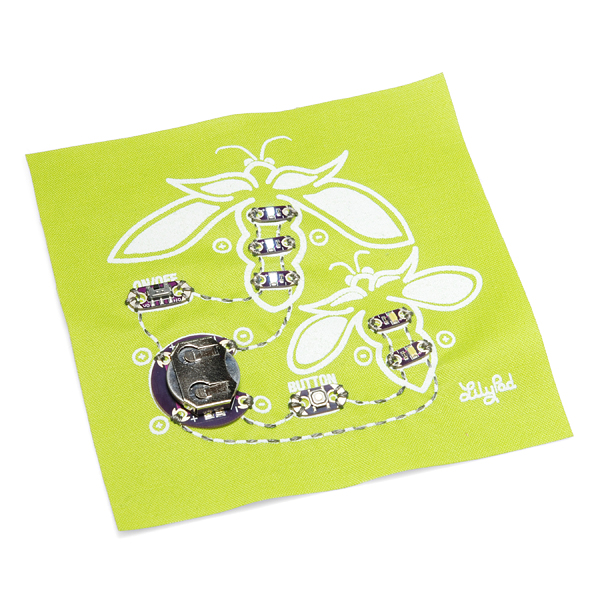 |
| Image of an embroidered design printed onto cotton |
I have seen some impressive e-textile creations online but many of these involve significantly more sewing than actual coding. I was concerned that by introducing e-textiles to the club we would end up with students spending most of their time sewing rather than forging ahead with more challenging coding concepts.
I wanted something in kit form, with minimal sewing but which introduced students to the potential of e-textiles and soft circuits. It also had to be cheap as we had very little budget. Basically I was after a printable textile equivalent of kits such as this Christmas Tree kit:
 |
| Pi Hut's Christmas Tree Kit |
or even better, something like this e sewing template from Spark Fun
 |
| Lilypad e sewing kit |
So, I turned to my old friend - a stack of inkjet T-shirt transfer paper - which I have called upon for many projects over the years. I found a suitable Christmas Tree Image online to which I added the following:
- LED positions
- resistor positions
- guidelines for conductive thread
- external connection positions
The image was then reversed,
printed onto T-shirt transfer paper, cut out and ironed onto white felt. Here is the finished article.
 |
| Completed Christmas Tree |
I sewed this myself and presented it to the students as one of many ready-made projects for which the coding was the main goal. Another example was this training shoe:
 |
| Trainer Light Sequencing Project |
Once completed, these e-textiles were easy to store, reusable and robust.
Not only is this technique useful for introducing e-textiles it also provides an alternative to breadboard circuits and commercially made projects such as traffic light add-ons.
No special electronic components were used, just cheap LEDs and resistors which were attached with conductive thread. There are plenty of instructions elsewhere online as to the best way to sew these on. I use long nose pliers to twist the ends into loops, but scissors also work. Here are some of my efforts:
And for the terminals, I use small coils of copper wire. These can be attached easily to crocodile clips or to jumper wires:
Not only is this technique useful for introducing e-textiles it also provides an alternative to breadboard circuits and commercially made projects such as traffic light add-ons.
No special electronic components were used, just cheap LEDs and resistors which were attached with conductive thread. There are plenty of instructions elsewhere online as to the best way to sew these on. I use long nose pliers to twist the ends into loops, but scissors also work. Here are some of my efforts:
And for the terminals, I use small coils of copper wire. These can be attached easily to crocodile clips or to jumper wires:







No comments:
Post a Comment